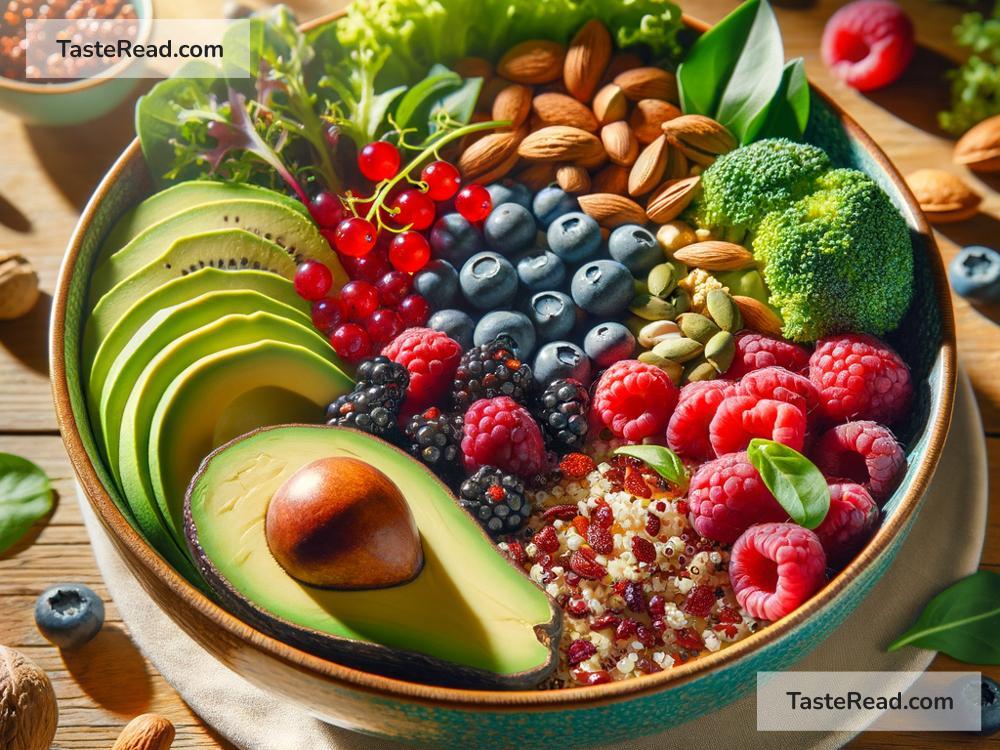Foods for Improving Intuitive Eating: A Simple Guide
Are you tired of diets that leave you feeling restricted and unsatisfied? Intuitive eating might be the answer you’ve been looking for. It’s not about counting calories or following strict meal plans — it’s about listening to your body and eating based on hunger, satisfaction, and enjoyment. With practice, intuitive eating can lead to a healthier relationship with food. But where do you start? This blog will introduce you to a variety of foods that can support your journey toward intuitive eating.
What Is Intuitive Eating?
Before diving into the foods, let’s briefly explain intuitive eating. It’s not a diet; it’s a lifestyle approach to eating that encourages you to trust your body’s cues. Instead of eating because a clock says it’s lunchtime or avoiding certain foods because they’re labeled “bad,” you eat based on your body’s signals. Are you hungry? Eat. Are you full? Stop. Do you crave dessert? Enjoy it without guilt.
The goal is to find balance and rediscover your natural instincts, eating in a way that feels good both physically and mentally. To succeed at intuitive eating, you need to nourish your body, tune into its needs, and let go of restrictive diet rules. Sounds simple, right? Let’s explore the types of foods that can help you out.
1. Whole Grains for Steady Energy
Whole grains like oats, quinoa, brown rice, and whole wheat bread are great options for intuitive eaters. These foods provide long-lasting energy to keep you going throughout the day. Because they digest slowly, whole grains help you tune into fullness cues. After eating a bowl of oatmeal, for example, you’ll feel satisfied for hours, preventing mindless snacking.
The key here is to notice how your body feels after eating these grains. Do they keep you energized and focused? If they do, great — they’re likely a good fit for you.
2. Proteins That Support Satiety
Protein helps you feel full and satisfied, so it’s a staple for intuitive eating. Foods like eggs, chicken, fish, beans, tofu, and nuts are excellent choices. Listen to your body as you explore different types of protein — one day you might crave salmon, and another day you might feel like having scrambled eggs.
Don’t forget snacks with protein, like a handful of almonds or a serving of Greek yogurt. These are perfect when you’re just a bit hungry and need something light to satisfy you.
3. Fruits and Vegetables for Variety and Balance
Your body naturally craves a mix of nutrients, and fruits and vegetables offer just that. Packed with vitamins, minerals, and fiber, these foods help you feel good inside and out. Whether it’s crunchy carrots, juicy apples, or roasted sweet potatoes, experiment with different flavors and textures to find what you enjoy.
One great thing about intuitive eating is you don’t need to force yourself to eat a salad every day just because it’s “healthy.” Instead, ask yourself, “Which vegetable sounds good right now?” Maybe it’s grilled zucchini or a refreshing cucumber slice. Let your body guide you.
4. Healthy Fats for Satisfaction and Flavor
Healthy fats, like those found in avocados, olive oil, nuts, and seeds, are an important part of your diet. They don’t just give you energy — they also enhance the flavor and texture of meals, making eating more enjoyable. Fat is often given a bad reputation in diet culture, but intuitive eating embraces it as a crucial nutrient.
For example, adding a drizzle of olive oil to roasted vegetables or spreading peanut butter on whole-grain toast can make meals richer and more satisfying. Pay attention to how these fats make you feel. They often provide the physical and emotional fullness you need.
5. Comfort Foods for Emotional Satisfaction
Yes, comfort foods have a place in intuitive eating! Whether it’s pizza, ice cream, or a homemade cupcake, these foods can bring joy and emotional comfort. The difference in intuitive eating is that you don’t eat these foods out of guilt or stress. Instead, you approach them mindfully.
When you crave a slice of pizza, savor it, and enjoy the experience fully. Don’t feel bad about the calories or label it as “cheating.” By allowing all foods into your diet, you prevent the cycle of restriction and bingeing, creating a healthier mindset around eating.
6. Hydration Matters Too
While not technically food, water plays a huge role in intuitive eating. Sometimes, we mistake thirst for hunger. Staying well-hydrated helps you tune into your body’s real needs. So make sure you’re drinking enough water throughout the day — and if you don’t love plain water, try herbal teas, infused water with fruits, or sparkling water.
How to Use These Foods in Your Intuitive Eating Journey
Now that you’ve learned about different foods that support intuitive eating, here are some quick tips to implement them:
- Experiment with small portions: Try different foods and see how they make you feel!
- Stop when you’re satisfied: Eating until you’re comfortably full prevents overeating.
- Honor your cravings: Don’t ignore your desire for a specific food — enjoy it mindfully.
- Focus on variety: Include different food groups so your body gets all the nutrients it needs.
Final Thoughts
Intuitive eating is about trusting your body and reconnecting with its signals. Whole grains give you energy, protein keeps you full, fruits and veggies provide balance, healthy fats add flavor, and comfort foods feed your soul. All these foods work together to support a joyful and mindful approach to eating.
It takes time to shift away from diet culture and fully embrace intuitive eating, but the journey is worth it. Be patient and kind to yourself as you explore this new way of nourishing your body — and don’t forget to enjoy every bite!


